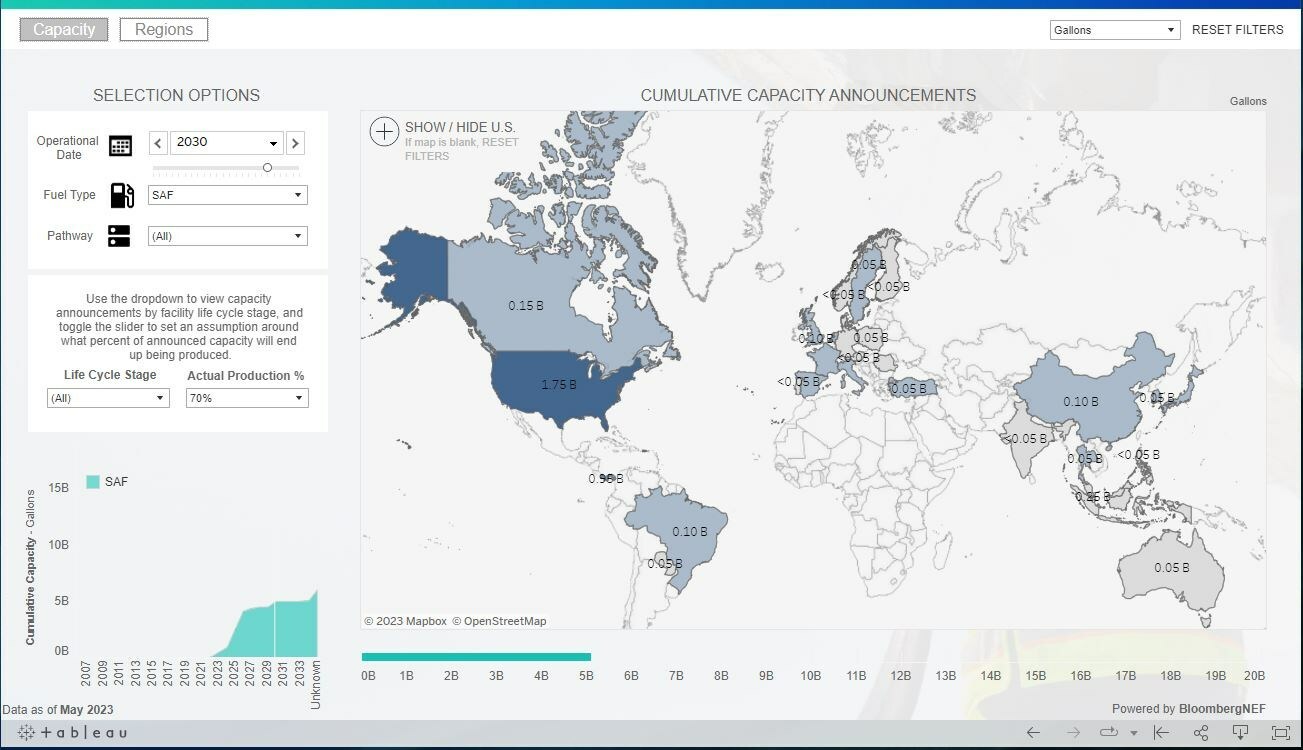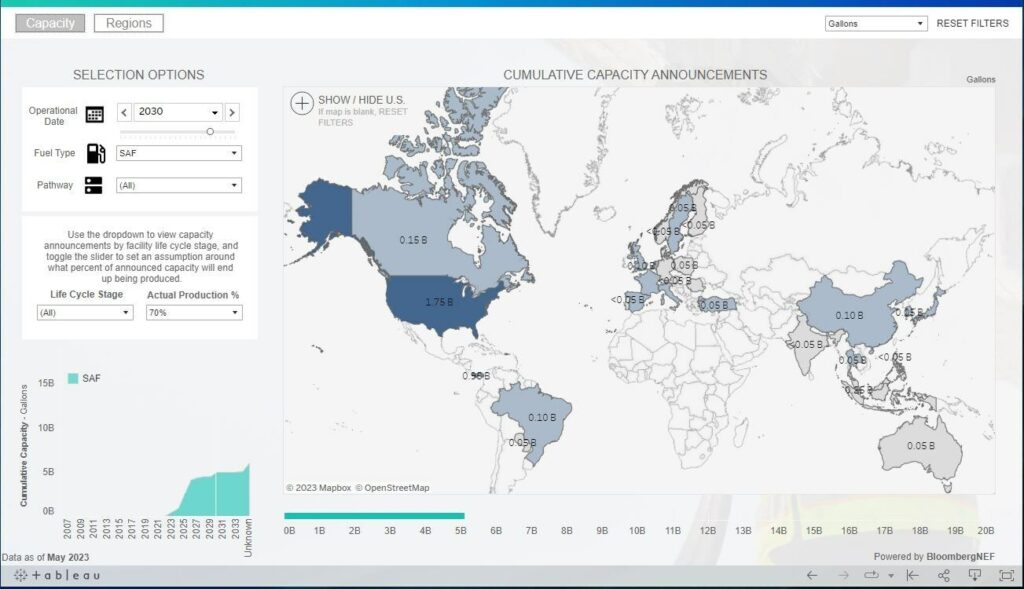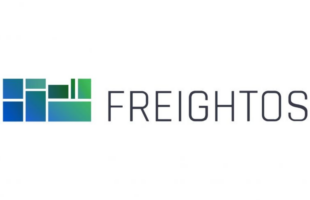
Boeing today launched SAF Dashboard, a tool that tracks expected sustainable aviation fuel (SAF) capacity over the next decade. (Image: Boeing)

Boeing is providing more access to necessary data what will advance industry talks about decarbonization with the launch of a SAF Dashboard, a tool that can track the ‘expected’ sustainable aviation fuel (SAF) capacity over the next decade.
The Dashboard aggregates total SAF capacity announcements by suppliers on a global scale nased on data collected by BloombergNEF. It can then filter anticipated supply by production pathway, location and other metrics.
The tool, released by Boeing at the 2023 Paris Air Show, is expected to support discussion and action among industry stakeholders regarding the existing capacitycnd future production levels required to meet the commercial aviation industry’s goal of net-zero emissions by 2050.
“SAF reduces CO2 emissions by up to 85% and possibly more over the fuel’s life cycle, offering the greatest potential to decarbonize aviation over the next 30 years,” said Boeing chief sustainability officer, Chris Raymond.
“SAF Dashboard portrays the data visually as our industry works together across sectors to increase SAF production for a more sustainable aerospace future.”
The release of SAF Dashboard comes after Boeing in May launched the public version of the Boeing ‘Cascade’ Climate Impact Model, a data modeling tool that identifies the effects of a range of sustainability solutions to reduce aviation’s carbon emissions.
Cascade and SAF Dashboard provide access to necessary data to advance the conversation on aviation decarbonization. Visit Cascade and the SAF Dashboard at Boeing’s new Sustainable Aerospace Together hub – www.sustainabilitytogether.aero








